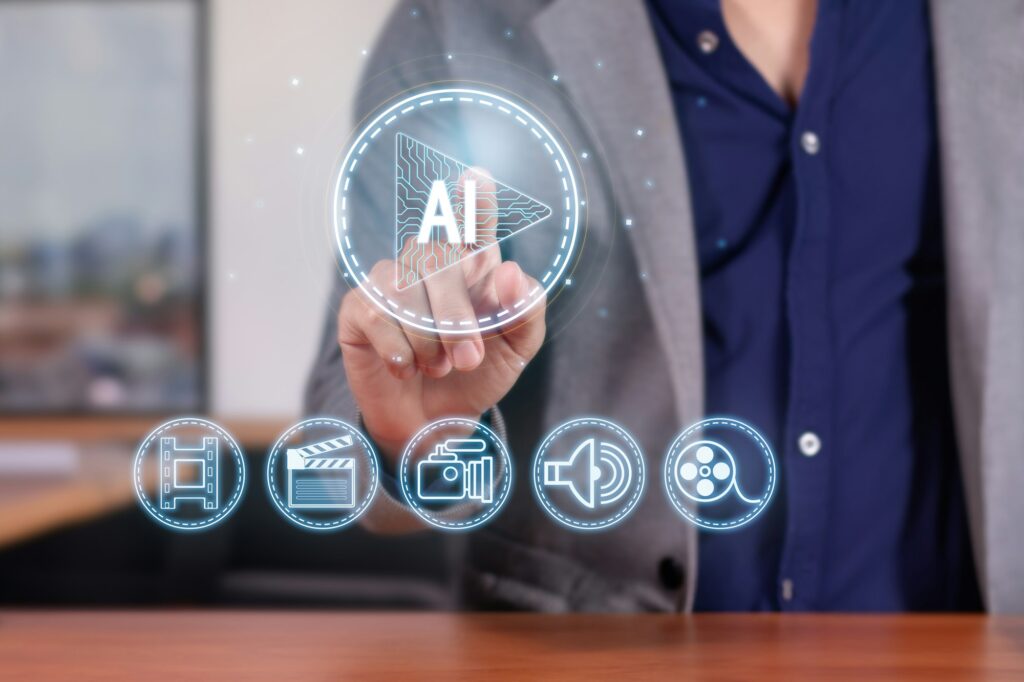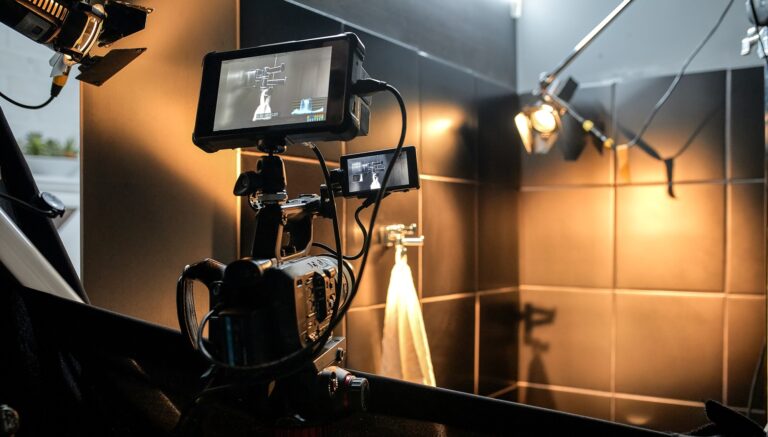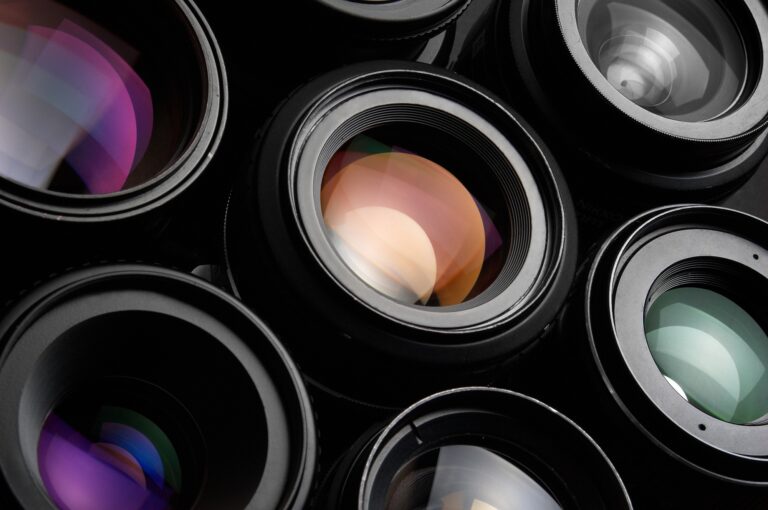Introduction: The Evolution of Post-Production
The world of media production has undergone a seismic shift over the past few decades. From the days of manual film splicing to the advent of digital editing software, the post-production process has continually evolved to meet the demands of an ever-changing industry. Today, we stand on the brink of another revolution, driven by the integration of Artificial Intelligence (AI) into post-production workflows. This transformation promises to enhance efficiency, precision, and creativity, fundamentally altering how we approach the final stages of media production.
Historically, post-production was a labor-intensive process requiring meticulous attention to detail. Editors would spend countless hours sifting through raw footage, making precise cuts, and ensuring that the final product met the director’s vision. The introduction of digital editing tools like Adobe Premiere Pro and Final Cut Pro streamlined many of these tasks, but the core challenges remained. Enter AI, a technology that has the potential to automate and optimize many aspects of post-production, from editing and color correction to sound design and visual effects.
As we delve into the various facets of AI in modern post-production, it becomes clear that this technology is not just a passing trend but a fundamental shift in how media is created and consumed. By examining the evolution of post-production, understanding the role of raw footage, and exploring the traditional workflow, we can better appreciate the transformative impact of AI on this crucial stage of media production.
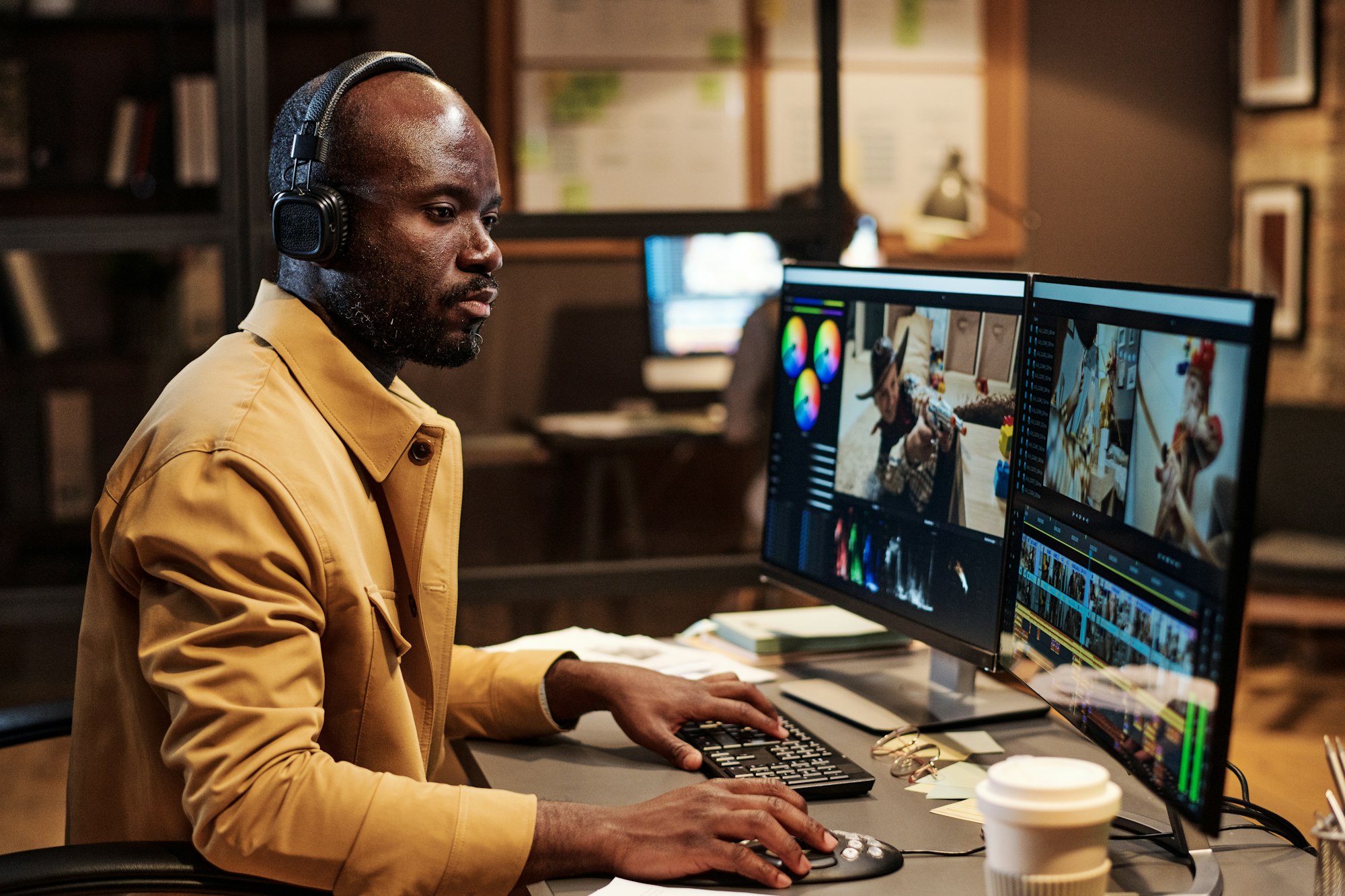
Understanding Raw Footage: The Starting Point
Raw footage is the unedited, unprocessed video captured during filming. It serves as the foundational material from which the final product is crafted. This footage is often extensive, encompassing multiple takes, angles, and scenes, all of which must be meticulously reviewed and edited to create a cohesive narrative. The sheer volume of raw footage can be overwhelming, making the initial stages of post-production particularly challenging.
In traditional workflows, editors would manually sift through hours of raw footage, identifying the best takes and assembling them into a rough cut. This process required a keen eye for detail and a deep understanding of the project’s vision. The goal was to distill the essence of the raw footage, selecting the most compelling shots and sequences to tell a coherent story. This stage was both time-consuming and labor-intensive, often requiring weeks or even months to complete.
With the advent of AI, the handling of raw footage has become significantly more efficient. AI algorithms can analyze vast amounts of footage in a fraction of the time it would take a human editor. These algorithms can identify key scenes, detect emotions, and even suggest optimal cuts based on predefined criteria. This not only speeds up the initial stages of post-production but also ensures a higher degree of precision and consistency, allowing editors to focus on the creative aspects of their work.
The Traditional Post-Production Workflow
The traditional post-production workflow is a multi-step process that involves several key stages: ingesting and organizing raw footage, creating a rough cut, refining the edit, color correction and grading, sound design and mixing, and finally, adding visual effects and motion graphics. Each of these stages requires specialized skills and tools, making post-production a collaborative effort involving editors, colorists, sound designers, and VFX artists.
Ingesting and organizing raw footage is the first step, where all the captured material is imported into editing software and categorized based on scenes, takes, and other relevant criteria. This organizational phase is crucial for ensuring a smooth workflow, as it allows editors to quickly locate and access the footage they need. Once the footage is organized, editors create a rough cut, assembling the selected shots into a preliminary sequence that outlines the basic structure of the final product.
The rough cut is then refined through multiple iterations, with editors making precise cuts, transitions, and adjustments to ensure a seamless flow. This stage often involves close collaboration with directors and producers to ensure that the final edit aligns with the project’s vision. Following the refinement of the edit, color correction and grading are performed to enhance the visual aesthetics, while sound design and mixing ensure that the audio elements are balanced and immersive. Finally, visual effects and motion graphics are added to create a polished, professional product.

The Advent of AI in Media Production
The integration of AI into media production marks a significant milestone in the evolution of post-production workflows. AI technologies, such as machine learning, computer vision, and natural language processing, have opened up new possibilities for automating and optimizing various aspects of post-production. These advancements have the potential to revolutionize the industry, making the process faster, more efficient, and more accessible to creators of all levels.
One of the most notable applications of AI in media production is in the realm of video editing. AI-powered editing tools can analyze raw footage, identify key scenes, and even suggest optimal cuts based on predefined criteria. This not only speeds up the editing process but also ensures a higher degree of precision and consistency. For example, Adobe’s Sensei AI platform uses machine learning algorithms to automate tasks such as scene detection, color matching, and audio syncing, allowing editors to focus on the creative aspects of their work.
AI is also making significant strides in other areas of post-production, such as color correction and grading, sound design and mixing, and visual effects. AI-powered tools can analyze footage and automatically apply color corrections, balance audio levels, and generate realistic visual effects, all with a high degree of accuracy and efficiency. These advancements are not only streamlining workflows but also enabling creators to achieve professional-quality results with less time and effort.
AI-Powered Editing: Speed and Precision
AI-powered editing tools are transforming the way editors approach their work, offering unprecedented speed and precision. Traditional editing workflows often involve manually sifting through hours of raw footage, identifying the best takes, and assembling them into a coherent sequence. This process can be time-consuming and labor-intensive, requiring a keen eye for detail and a deep understanding of the project’s vision.
With AI-powered editing tools, much of this manual labor can be automated. Machine learning algorithms can analyze vast amounts of footage in a fraction of the time it would take a human editor. These algorithms can identify key scenes, detect emotions, and even suggest optimal cuts based on predefined criteria. For example, IBM’s Watson Video Enrichment platform uses AI to analyze video content and generate metadata, making it easier for editors to locate and access the footage they need.
In addition to speeding up the editing process, AI-powered tools also offer a higher degree of precision and consistency. By automating repetitive tasks such as scene detection, color matching, and audio syncing, AI allows editors to focus on the creative aspects of their work. This not only enhances the overall quality of the final product but also ensures that the project stays on schedule and within budget.
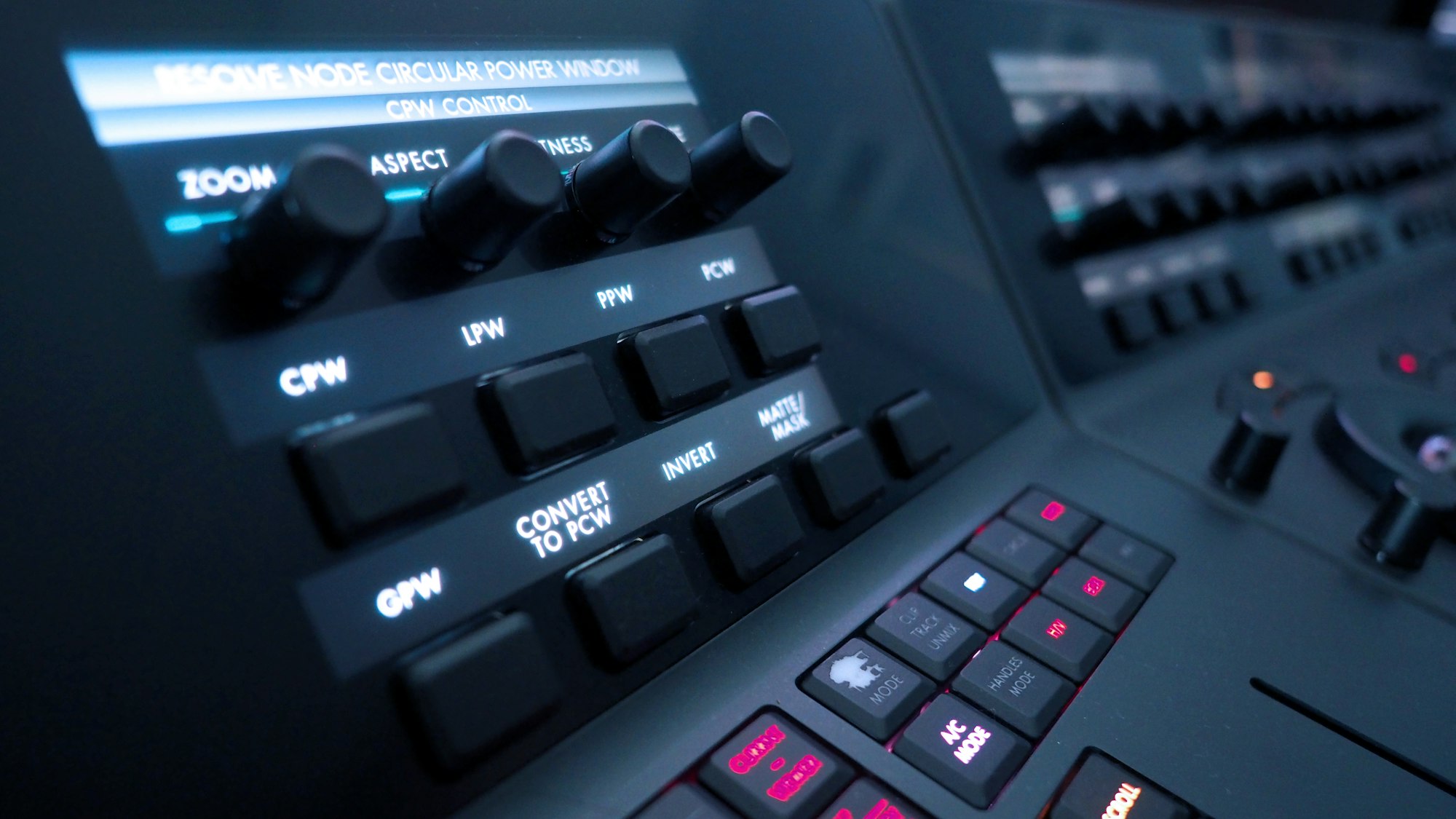
Automated Color Correction and Grading
Color correction and grading are essential components of the post-production process, responsible for enhancing the visual aesthetics of the final product. Traditionally, these tasks require a high level of expertise and a keen eye for detail, as colorists must manually adjust the color balance, contrast, and saturation of each shot to achieve a consistent and visually appealing look.
AI-powered tools are revolutionizing the field of color correction and grading by automating many of these tasks. Machine learning algorithms can analyze footage and automatically apply color corrections based on predefined criteria, such as matching the color palette of a reference image or achieving a specific visual style. For example, DaVinci Resolve’s Neural Engine uses AI to perform tasks such as color matching, face detection, and object removal, allowing colorists to achieve professional-quality results with less time and effort.
In addition to automating routine tasks, AI-powered tools also offer new creative possibilities for colorists. For example, AI algorithms can analyze footage and generate unique color grading presets based on the content and mood of the scene. This allows colorists to experiment with different looks and styles, enhancing the overall visual impact of the final product. By streamlining the color correction and grading process, AI is enabling creators to achieve higher levels of creativity and efficiency in their work.
Sound Design and Mixing with AI
Sound design and mixing are critical components of the post-production process, responsible for creating an immersive audio experience that complements the visual elements of the final product. Traditionally, these tasks require a high level of expertise and a keen ear for detail, as sound designers must manually balance audio levels, remove background noise, and create sound effects that enhance the overall narrative.
AI-powered tools are transforming the field of sound design and mixing by automating many of these tasks. Machine learning algorithms can analyze audio tracks and automatically apply noise reduction, equalization, and other audio enhancements based on predefined criteria. For example, Adobe Audition’s Auto-Ducking feature uses AI to automatically adjust the volume of background music based on the presence of dialogue, ensuring that the audio levels are balanced and clear.
In addition to automating routine tasks, AI-powered tools also offer new creative possibilities for sound designers. For example, AI algorithms can analyze audio tracks and generate unique sound effects based on the content and mood of the scene. This allows sound designers to experiment with different sounds and styles, enhancing the overall audio experience of the final product. By streamlining the sound design and mixing process, AI is enabling creators to achieve higher levels of creativity and efficiency in their work.
Visual Effects: Enhancing Creativity with Machine Learning
Visual effects (VFX) are a crucial component of modern media production, responsible for creating stunning visuals that enhance the overall impact of the final product. Traditionally, VFX work requires a high level of expertise and a deep understanding of complex software tools, as artists must manually create and integrate visual effects into the footage.
AI-powered tools are revolutionizing the field of visual effects by automating many of these tasks. Machine learning algorithms can analyze footage and automatically generate realistic visual effects based on predefined criteria. For example, NVIDIA’s GauGAN uses AI to generate photorealistic images from simple sketches, allowing VFX artists to create stunning visuals with less time and effort.
In addition to automating routine tasks, AI-powered tools also offer new creative possibilities for VFX artists. For example, AI algorithms can analyze footage and generate unique visual effects based on the content and mood of the scene. This allows VFX artists to experiment with different looks and styles, enhancing the overall visual impact of the final product. By streamlining the visual effects process, AI is enabling creators to achieve higher levels of creativity and efficiency in their work.
AI in Motion Graphics and Animation
Motion graphics and animation are essential components of modern media production, responsible for creating dynamic visuals that enhance the overall impact of the final product. Traditionally, these tasks require a high level of expertise and a deep understanding of complex software tools, as artists must manually create and animate graphics and characters.
AI-powered tools are transforming the field of motion graphics and animation by automating many of these tasks. Machine learning algorithms can analyze footage and automatically generate realistic animations based on predefined criteria. For example, Adobe’s Character Animator uses AI to track facial movements and automatically animate characters in real-time, allowing artists to create dynamic animations with less time and effort.
In addition to automating routine tasks, AI-powered tools also offer new creative possibilities for motion graphics and animation artists. For example, AI algorithms can analyze footage and generate unique animations based on the content and mood of the scene. This allows artists to experiment with different looks and styles, enhancing the overall visual impact of the final product. By streamlining the motion graphics and animation process, AI is enabling creators to achieve higher levels of creativity and efficiency in their work.
Streamlining Workflow: AI in Project Management
Project management is a critical component of the post-production process, responsible for ensuring that all tasks are completed on time and within budget. Traditionally, project management requires a high level of expertise and a deep understanding of complex software tools, as managers must manually track progress, allocate resources, and coordinate tasks.
AI-powered tools are transforming the field of project management by automating many of these tasks. Machine learning algorithms can analyze project data and automatically generate schedules, allocate resources, and track progress based on predefined criteria. For example, Wrike’s AI-powered project management platform uses machine learning to predict project timelines, identify potential bottlenecks, and suggest optimal resource allocation, allowing managers to streamline their workflows and ensure that projects stay on track.
In addition to automating routine tasks, AI-powered tools also offer new possibilities for project managers. For example, AI algorithms can analyze project data and generate insights and recommendations based on historical trends and patterns. This allows managers to make more informed decisions and optimize their workflows for maximum efficiency. By streamlining the project management process, AI is enabling managers to achieve higher levels of productivity and efficiency in their work.
Challenges and Ethical Considerations in AI Post-Production
While AI-powered tools offer many benefits for post-production workflows, they also present several challenges and ethical considerations. One of the primary challenges is the potential for job displacement, as AI-powered tools automate many tasks traditionally performed by human editors, colorists, sound designers, and VFX artists. This raises important questions about the future of work in the media production industry and the need for reskilling and upskilling programs to help workers adapt to new technologies.
Another challenge is the potential for bias in AI algorithms. Machine learning algorithms are trained on large datasets, and if these datasets are biased, the resulting algorithms may also be biased. This can lead to unintended consequences, such as the perpetuation of stereotypes or the exclusion of certain groups from media representation. It is essential for developers to carefully consider the ethical implications of their algorithms and take steps to mitigate bias in their training data.
Finally, there are important ethical considerations related to the use of AI in media production. For example, AI-powered tools can be used to create deepfakes, which are realistic but fake videos that can be used to spread misinformation or manipulate public opinion. It is essential for creators to use AI responsibly and consider the potential impact of their work on society. By addressing these challenges and ethical considerations, we can ensure that AI-powered tools are used to enhance creativity and efficiency in post-production while minimizing potential risks.
The Future of Post-Production: Human-AI Collaboration
The future of post-production lies in the collaboration between human creators and AI-powered tools. While AI can automate many routine tasks and enhance efficiency, human creativity and expertise remain essential for achieving the highest levels of quality and innovation. By leveraging the strengths of both humans and AI, we can create a more efficient and creative post-production process.
One of the key benefits of human-AI collaboration is the ability to achieve higher levels of creativity and innovation. AI-powered tools can analyze vast amounts of data and generate insights and recommendations based on patterns and trends. This allows human creators to experiment with new ideas and styles, pushing the boundaries of what is possible in media production. For example, AI algorithms can analyze footage and generate unique visual effects or color grading presets based on the content and mood of the scene, allowing creators to achieve stunning visuals with less time and effort.
Another benefit of human-AI collaboration is the ability to achieve higher levels of efficiency and productivity. AI-powered tools can automate routine tasks such as scene detection, color matching, and audio syncing, allowing human creators to focus on the creative aspects of their work. This not only enhances the overall quality of the final product but also ensures that projects stay on schedule and within budget. By streamlining workflows and optimizing resource allocation, AI-powered tools are enabling creators to achieve higher levels of efficiency and productivity in their work.
In conclusion, the integration of AI into post-production workflows is transforming the media production industry, offering unprecedented speed, precision, and creativity. By leveraging the strengths of both humans and AI, we can create a more efficient and creative post-production process that enhances the overall quality of the final product. As we continue to explore the possibilities of AI in media production, it is essential to address the challenges and ethical considerations associated with this technology to ensure that it is used responsibly and for the benefit of all.
Read our Blog

